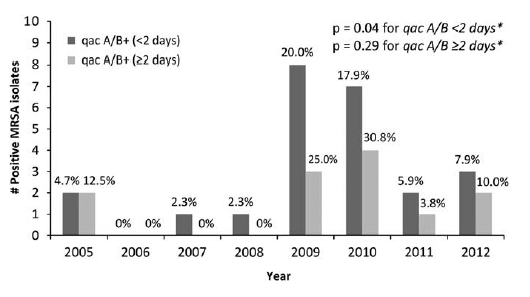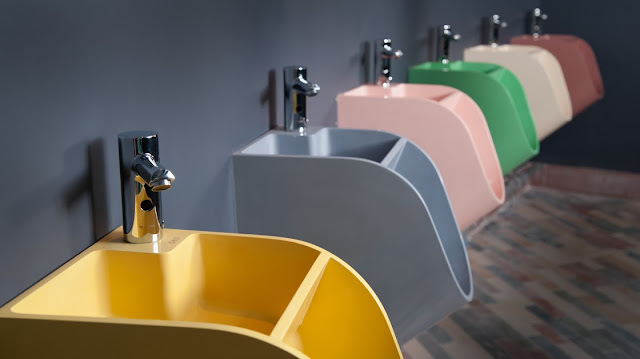Negative study of the month, C. difficile edition
I like a good negative study, particularly when it’s a multicenter randomized trial about preventing our most problematic healthcare-associated infection. So let’s take a moment to appreciate this work from Amy Ray and colleagues.
These investigators randomized 16 hospitals to either standard cleaning or “enhanced cleaning”, which meant monitoring of environmental services personnel with feedback of performance (measured using fluorescent markers for cleaning and environmental cultures for disinfection). They measured the outcome of healthcare-onset, healthcare-facility associated C. difficile infection (HO-HFCA CDI). The study was powered to have >95% power to detect a 25% reduction in HO-HFCA CDI in intervention hospitals (and 70% power to detect a 15% reduction).
Bottom line: the intervention led to clear improvement in cleaning (better removal of fluorescent markers) and disinfection (reduction in % of C. difficile + environmental cultures in CDI rooms from 13% to 3%--which was the approximate rate of contamination in non-CDI rooms). Unfortunately, there was no reduction in HO-HCFA CDI during the intervention period, and no difference between control and intervention hospitals (see figure below and article for details).
Few people know more about CDI than Curtis Donskey (senior author of this study), so I encourage you to read their interpretation of these negative findings. They cover several potential explanations--the one I find most convincing is that the portion of HO-HCFA CDI attributable to organism acquisition during hospital admission may be smaller than we realize. Thus I agree that we need more studies to help us “identify effective strategies to reduce the incidence of healthcare-associated CDI.”
I’ve already weighed in with my opinion on the most effective strategy.
Anyway, bravo to Ray and colleagues for an excellent addition to our knowledge about CDI prevention!




Dan- Thank you for the post. I too enjoyed reading this article. To me this further underscores how little we really know about preventing C. difficile infections in the hospital. For those who subscribe to the notion that heightened cleaning and the use of UVC robots will result in C. difficile salvation, they will be in for quite a (unpleasant) surprise. This epidemiologic problem is not as straightforward as preventing a CLABSI with a checklist.
ReplyDeleteGB